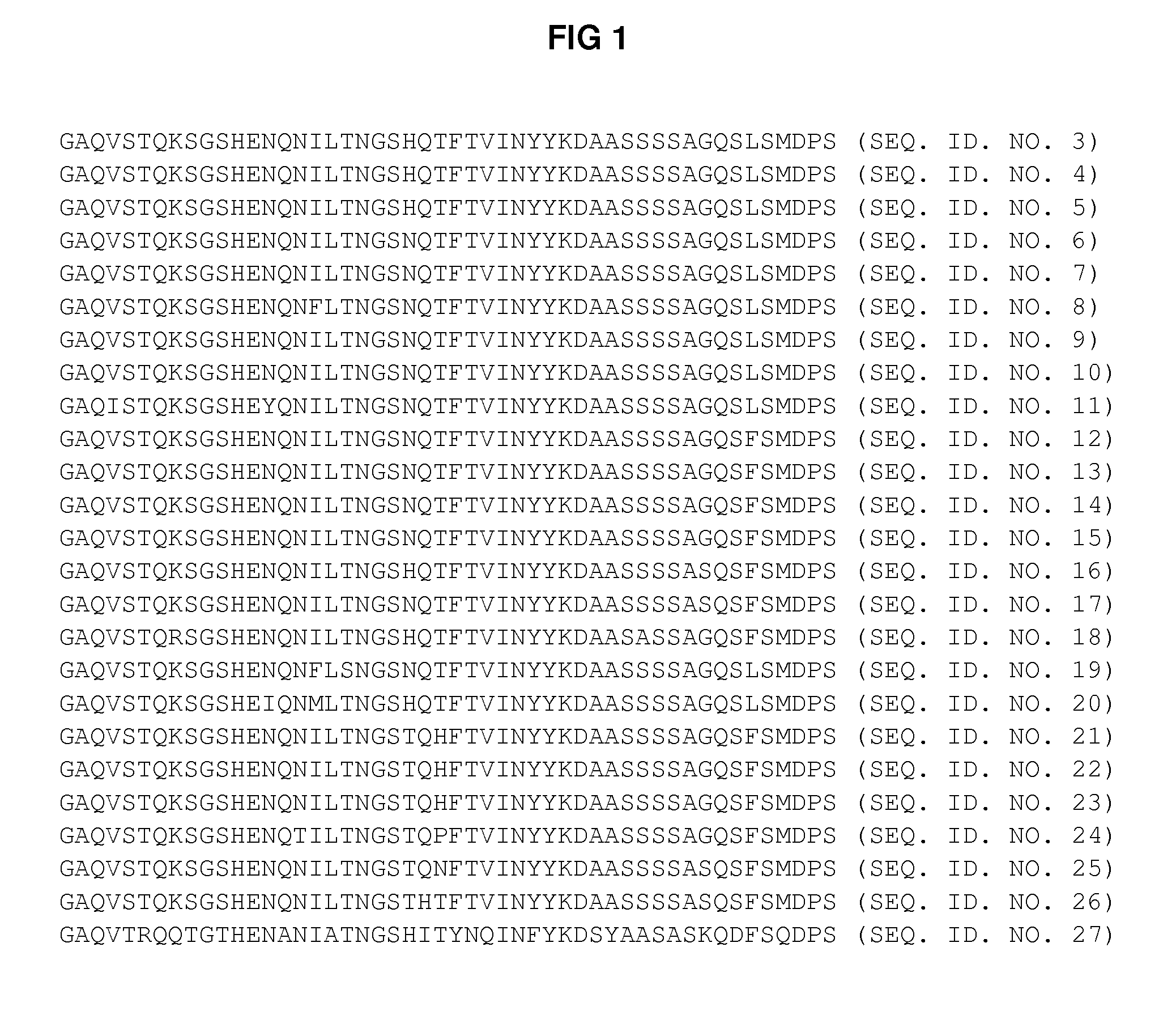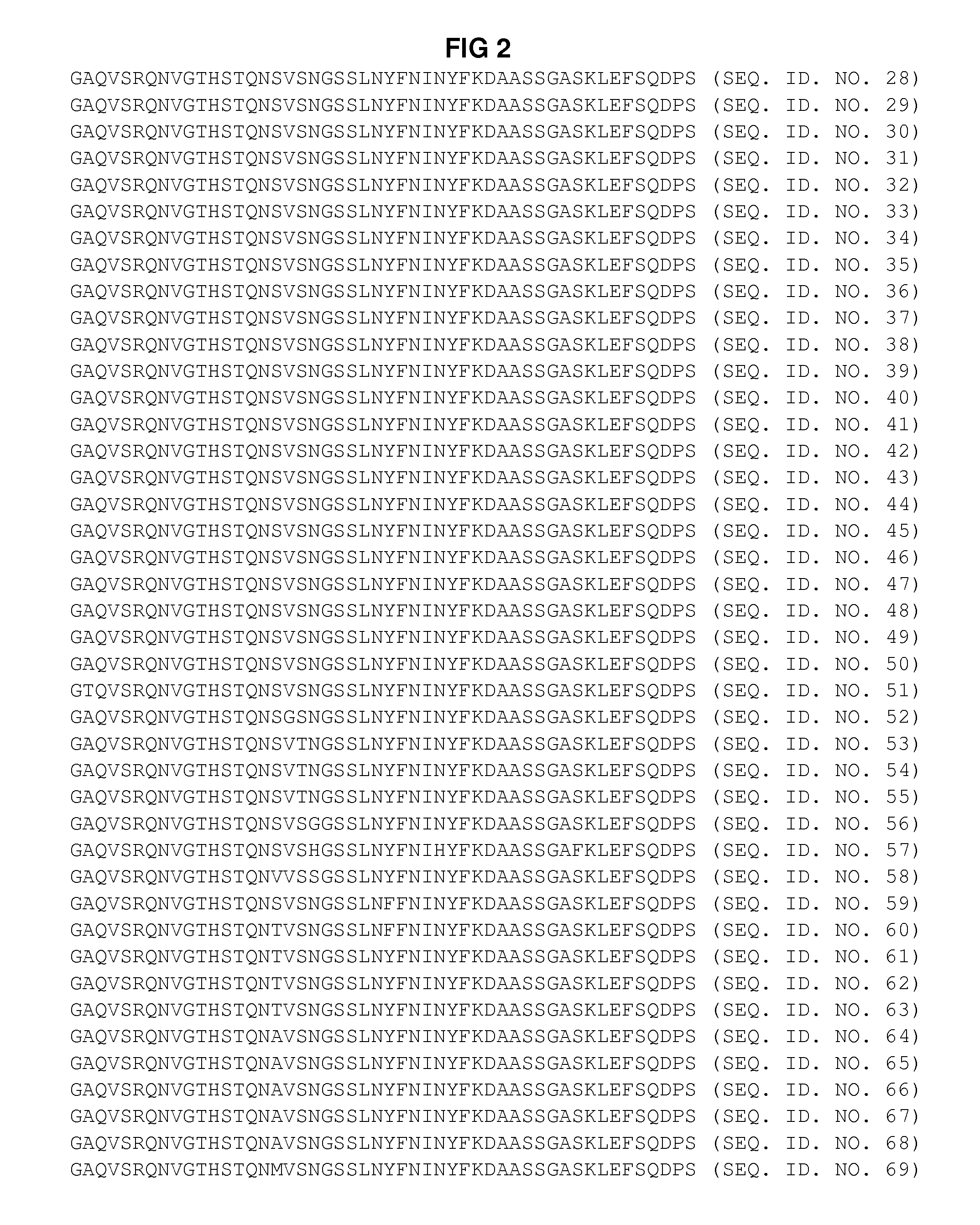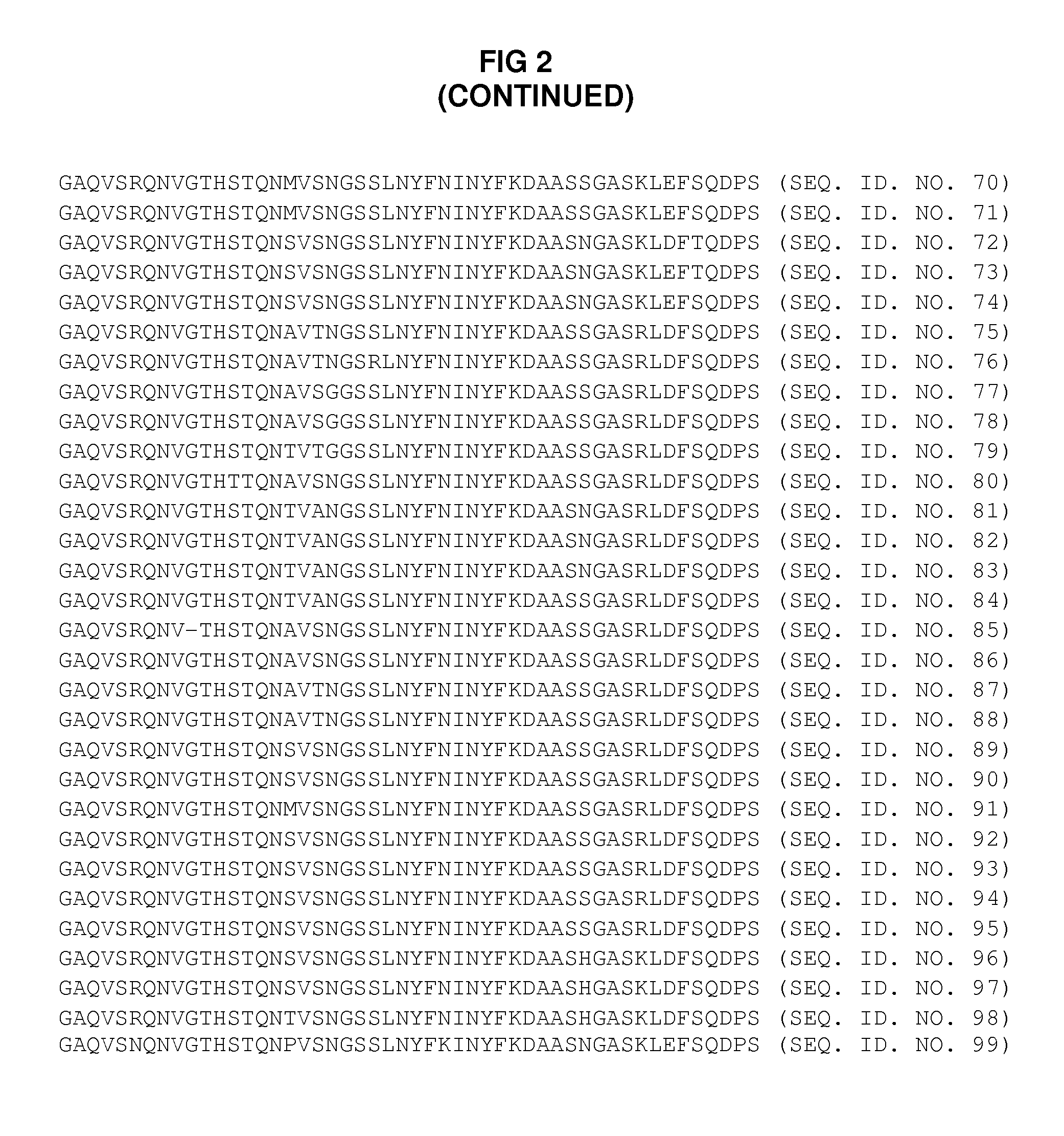Rhinovirus vaccines
a technology of rhinovirus and vaccine, applied in the field of vaccines against viruses, can solve the problems of no commercially available vaccine for human rhinovirus infection, the difficulty of producing effective vaccines against such viruses, and the cost of this illness to the united states economy
- Summary
- Abstract
- Description
- Claims
- Application Information
AI Technical Summary
Benefits of technology
Problems solved by technology
Method used
Image
Examples
example 1
MALDI Analysis of the VP4 Capsid Protein
[0119]Human rhinovirus was produced using previously described protocols (Erickson, Frankenberger et al. (1983) Proc. Natl. Acad. Sci. USA 80: 9314). In brief, HeLa cells were infected with HRV14 at a multiplicity of infection of 10. After incubating the infected cells at 35° C. for 9-10 hours, the virus was purified from lysed cells treated with N-lauryl-sarcosine to solubilize cellular debris. However, unlike the previously described protocols, the lysed cellular material was not treated with trypsin since even this brief treatment resulted in cleavage of VP1 and VP4 (Lewis, Bothner et al. (1998) Proc. Natl. Acad. Sci. 95:6774-78). Virus particles were pelleted by ultracentrifugation at 280 Kg for 2 hours. The virus was then resuspended in 20 mM Tris buffer, pH 7.6, and further purified using 7.5-45% sucrose gradients centrifuged at 2×105 g for 1.5 hours. The virus bands were collected, pooled and dialyzed overnight at 4° C. against 20 mM Tr...
example 2
Determination of the Vaccine Target
[0124]The amino acid sequence of portions of the N-termini of the VP4 capsid proteins (for 97 different human rhinovirus serotypes) were analyzed to identify areas of preferred sequence conservation. The 97 different VP4 amino acid sequences were aligned and compared using BLAST. After conducting such analysis, two groups of homologous (i.e., conserved) sequences were apparent.
[0125]More specifically, it was found that preferred sequence conservation existed within two subsets of serotypes. SEQ ID NO 3-27 represents a first group of amino acid sequences which exist on transiently exposed portions of the N-termini of VP4 capsid proteins (referred to herein as “HRV Group 1”). SEQ ID NO 28-99 represents a second group of amino acid sequences which exist on transiently exposed portions of the N-termini of VP4 capsid proteins (referred to herein as “HRV Group 2”).
[0126]While such groups of preferred sequence conservation were identified electronically u...
example 3
Peptide Vaccine Design
[0130]After identifying the two groups of preferred sequence conservation described above (HRV Groups 1 and 2), peptide vaccines were designed. As discussed herein, a first peptide vaccine was designed to represent a functionally equivalent peptide of the sequences comprising HRV Group 1 (referred to herein as “Peptide Vaccine 1”) (SEQ ID NO 1). Peptide Vaccine 1 represents a native sequence of the N-termini of the human rhinovirus 14 VP4 capsid proteins. In addition, a second peptide vaccine was designed to represent a functionally equivalent peptide of the sequences comprising HRV Group 2 (referred to herein as “Peptide Vaccine 2”) (SEQ ID NO 2).
[0131]FIG. 5 shows a graphical representation of Peptide Vaccines 1 and 2. The sequences illustrated therein are annotated to show the degree of conservation within each of the two groups, namely, HRV Groups 1 and 2. In this Example, the degree of conservation was measured by percentage identity for each residue compr...
PUM
| Property | Measurement | Unit |
|---|---|---|
| concentrations | aaaaa | aaaaa |
| concentrations | aaaaa | aaaaa |
| concentrations | aaaaa | aaaaa |
Abstract
Description
Claims
Application Information
 Login to View More
Login to View More - R&D
- Intellectual Property
- Life Sciences
- Materials
- Tech Scout
- Unparalleled Data Quality
- Higher Quality Content
- 60% Fewer Hallucinations
Browse by: Latest US Patents, China's latest patents, Technical Efficacy Thesaurus, Application Domain, Technology Topic, Popular Technical Reports.
© 2025 PatSnap. All rights reserved.Legal|Privacy policy|Modern Slavery Act Transparency Statement|Sitemap|About US| Contact US: help@patsnap.com



